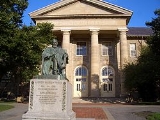
List of Nobel laureates affiliated with Cornell University
Encyclopedia
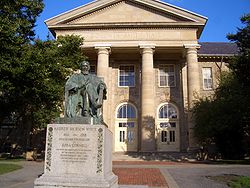
Nobel Prize
The Nobel Prizes are annual international awards bestowed by Scandinavian committees in recognition of cultural and scientific advances. The will of the Swedish chemist Alfred Nobel, the inventor of dynamite, established the prizes in 1895...
s are awarded annually by the Royal Swedish Academy of Sciences
Royal Swedish Academy of Sciences
The Royal Swedish Academy of Sciences or Kungliga Vetenskapsakademien is one of the Royal Academies of Sweden. The Academy is an independent, non-governmental scientific organization which acts to promote the sciences, primarily the natural sciences and mathematics.The Academy was founded on 2...
, the Karolinska Institute, and the Norwegian Nobel Committee
Norwegian Nobel Committee
The Norwegian Nobel Committee awards the Nobel Peace Prize each year.Its five members are appointed by the Norwegian Parliament and roughly represent the political makeup of that body.-History:...
to individuals who make outstanding contributions in the fields of chemistry
Nobel Prize in Chemistry
The Nobel Prize in Chemistry is awarded annually by the Royal Swedish Academy of Sciences to scientists in the various fields of chemistry. It is one of the five Nobel Prizes established by the will of Alfred Nobel in 1895, awarded for outstanding contributions in chemistry, physics, literature,...
, physics
Nobel Prize in Physics
The Nobel Prize in Physics is awarded once a year by the Royal Swedish Academy of Sciences. It is one of the five Nobel Prizes established by the will of Alfred Nobel in 1895 and awarded since 1901; the others are the Nobel Prize in Chemistry, Nobel Prize in Literature, Nobel Peace Prize, and...
, literature
Nobel Prize in Literature
Since 1901, the Nobel Prize in Literature has been awarded annually to an author from any country who has, in the words from the will of Alfred Nobel, produced "in the field of literature the most outstanding work in an ideal direction"...
, peace
Nobel Peace Prize
The Nobel Peace Prize is one of the five Nobel Prizes bequeathed by the Swedish industrialist and inventor Alfred Nobel.-Background:According to Nobel's will, the Peace Prize shall be awarded to the person who...
, and physiology or medicine
Nobel Prize in Physiology or Medicine
The Nobel Prize in Physiology or Medicine administered by the Nobel Foundation, is awarded once a year for outstanding discoveries in the field of life science and medicine. It is one of five Nobel Prizes established in 1895 by Swedish chemist Alfred Nobel, the inventor of dynamite, in his will...
. They were established by the 1895 will of Alfred Nobel
Alfred Nobel
Alfred Bernhard Nobel was a Swedish chemist, engineer, innovator, and armaments manufacturer. He is the inventor of dynamite. Nobel also owned Bofors, which he had redirected from its previous role as primarily an iron and steel producer to a major manufacturer of cannon and other armaments...
, which dictates that the awards should be administered by the Nobel Foundation
Nobel Foundation
The Nobel Foundation is a private institution founded on 29 June 1900 to manage the finances and administration of the Nobel Prizes. The Foundation is based on the last will of Alfred Nobel, the inventor of dynamite....
. Another prize, the Nobel Memorial Prize in Economic Sciences
Nobel Memorial Prize in Economic Sciences
The Nobel Memorial Prize in Economic Sciences, commonly referred to as the Nobel Prize in Economics, but officially the Sveriges Riksbank Prize in Economic Sciences in Memory of Alfred Nobel , is an award for outstanding contributions to the field of economics, generally regarded as one of the...
, was established in 1968 by the Sveriges Riksbank
Sveriges Riksbank
Sveriges Riksbank, or simply Riksbanken, is the central bank of Sweden and the world's oldest central bank. It is sometimes called the Swedish National Bank or the Bank of Sweden .-History:...
, the central bank
Central bank
A central bank, reserve bank, or monetary authority is a public institution that usually issues the currency, regulates the money supply, and controls the interest rates in a country. Central banks often also oversee the commercial banking system of their respective countries...
of Sweden
Sweden
Sweden , officially the Kingdom of Sweden , is a Nordic country on the Scandinavian Peninsula in Northern Europe. Sweden borders with Norway and Finland and is connected to Denmark by a bridge-tunnel across the Öresund....
, for contributors to the field of economics. Each prize is awarded by a separate committee; the Royal Swedish Academy of Sciences awards the Prizes in Physics, Chemistry, and Economics, the Karolinska Institute awards the Prize in Physiology or Medicine, and the Norwegian Nobel Committee awards the Prize in Peace. Each recipient receives a medal, a diploma and a cash prize that has varied throughout the years. In 1901, the winners of the first Nobel Prizes were given 150,782 SEK
Swedish krona
The krona has been the currency of Sweden since 1873. Both the ISO code "SEK" and currency sign "kr" are in common use; the former precedes or follows the value, the latter usually follows it, but especially in the past, it sometimes preceded the value...
, which is equal to 7,731,004 SEK in December 2007. In 2008, the winners were awarded a prize amount of 10,000,000 SEK. The awards are presented in Stockholm
Stockholm
Stockholm is the capital and the largest city of Sweden and constitutes the most populated urban area in Scandinavia. Stockholm is the most populous city in Sweden, with a population of 851,155 in the municipality , 1.37 million in the urban area , and around 2.1 million in the metropolitan area...
in an annual ceremony on December 10, the anniversary
Anniversary
An anniversary is a day that commemorates or celebrates a past event that occurred on the same day of the year as the initial event. For example, the first event is the initial occurrence or, if planned, the inaugural of the event. One year later would be the first anniversary of that event...
of Nobel's death.
As of 2009, there have been 41 Nobel laureates affiliated with Cornell University
Cornell University
Cornell University is an Ivy League university located in Ithaca, New York, United States. It is a private land-grant university, receiving annual funding from the State of New York for certain educational missions...
, including 13 Cornell alumni (laureates who attended the university as undergraduate or graduate students) and 28 members of the faculty. The Nobel Prize categories of Physics and Physiology or Medicine each account for twelve awards to Cornell-affiliated laureates. People affiliated with Cornell also have received eight Nobel Prize awards for Chemistry, four for Literature, three for Economics, and two Nobel Peace Prize
Nobel Peace Prize
The Nobel Peace Prize is one of the five Nobel Prizes bequeathed by the Swedish industrialist and inventor Alfred Nobel.-Background:According to Nobel's will, the Peace Prize shall be awarded to the person who...
s.
Laureates
| Year | | Image | Laureate | Relation | Category | | Rationale |
|---|---|---|---|---|---|
| 1936 |  |
Chemistry | "for his contributions to the study of molecular structure," primarily referring to his work on dipole moments and X-ray diffraction | ||
| 1938 |  |
Literature | "for her rich and truly epic descriptions of peasant life in China and for her biographical masterpieces" | ||
| 1944 | Physiology or Medicine | ||||
| 1944 |  |
Graduate study 1921-23 (transferred) |
Physics | "for his resonance Resonance In physics, resonance is the tendency of a system to oscillate at a greater amplitude at some frequencies than at others. These are known as the system's resonant frequencies... method for recording the magnetic properties of atomic nuclei Atomic nucleus The nucleus is the very dense region consisting of protons and neutrons at the center of an atom. It was discovered in 1911, as a result of Ernest Rutherford's interpretation of the famous 1909 Rutherford experiment performed by Hans Geiger and Ernest Marsden, under the direction of Rutherford. The... " |
|
| 1946 | 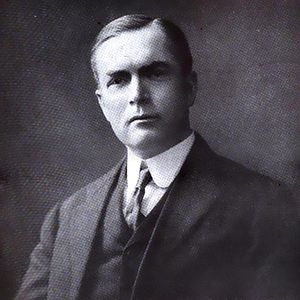 |
Co-recipient with Emily Greene Balch Emily Greene Balch Emily Greene Balch was an American academic, writer, and pacifist who received the Nobel Peace Prize in 1946 , notably for her work with the Women's International League for Peace and Freedom .Born in the Jamaica Plain neighborhood of Boston into an affluent family, she was amongst the first... |
Peace | "Chairman, International Missionary Council; President, World Alliance of Young Men's Christian Associations YMCA The Young Men's Christian Association is a worldwide organization of more than 45 million members from 125 national federations affiliated through the World Alliance of YMCAs... " |
|
| 1946 | Cornell graduate student 1911–1912 | Physiology or Medicine | |||
| 1946 | Professor of Biochemistry/Nutrition 1929–1955; took emeritus status in 1955 | Chemistry | |||
| 1953 | ,_biochemist_(2551001689).jpg) |
Physiology or Medicine | |||
| 1955 | Chemistry | ||||
| 1958 | Co-recipient with Edward Tatum and Joshua Lederberg Joshua Lederberg Joshua Lederberg ForMemRS was an American molecular biologist known for his work in microbial genetics, artificial intelligence, and the United States space program. He was just 33 years old when he won the 1958 Nobel Prize in Physiology or Medicine for discovering that bacteria can mate and... |
Physiology or Medicine | "for their discovery that genes act by regulating definite chemical events" | ||
| 1960 |  |
Physiology or Medicine | |||
| 1965 | 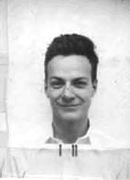 |
Physics | “their fundamental work in quantum electrodynamics, with deep-ploughing consequences for the physics of elementary particles” | ||
| 1967 |  |
Physics | |||
| 1967 | Chemistry | ||||
| 1967 | Physiology or Medicine | ||||
| 1968 | Co-recipient with H. Gobind Khorana and Marshall W. Nirenberg |
Professor of Organic Chemistry, 1948-1966 |
Physiology or Medicine | "for their interpretation of the genetic code and its function in protein synthesis" | |
| 1968 | Physiology or Medicine | ||||
| 1970 |  |
Physics | |||
| 1970 |  |
Peace | |||
| 1972 | Physics | ||||
| 1974 | Chemistry | ||||
| 1979 |  |
Co-recipient with Abdus Salam Abdus Salam Mohammad Abdus Salam, NI, SPk Mohammad Abdus Salam, NI, SPk Mohammad Abdus Salam, NI, SPk (Urdu: محمد عبد السلام, pronounced , (January 29, 1926– November 21, 1996) was a Pakistani theoretical physicist and Nobel laureate in Physics for his work on the electroweak unification of the... and Steven Weinberg Steven Weinberg Steven Weinberg is an American theoretical physicist and Nobel laureate in Physics for his contributions with Abdus Salam and Sheldon Glashow to the unification of the weak force and electromagnetic interaction between elementary particles.... |
Physics | "for their contributions to the theory of the unified weak and electromagnetic interaction between elementary particle Elementary particle In particle physics, an elementary particle or fundamental particle is a particle not known to have substructure; that is, it is not known to be made up of smaller particles. If an elementary particle truly has no substructure, then it is one of the basic building blocks of the universe from which... s, including, inter alia, the prediction of the weak neutral current" |
|
| 1979 |  |
Co-recipient with Abdus Salam Abdus Salam Mohammad Abdus Salam, NI, SPk Mohammad Abdus Salam, NI, SPk Mohammad Abdus Salam, NI, SPk (Urdu: محمد عبد السلام, pronounced , (January 29, 1926– November 21, 1996) was a Pakistani theoretical physicist and Nobel laureate in Physics for his work on the electroweak unification of the... and Sheldon Glashow |
Physics | "for their contributions to the theory of the unified weak and electromagnetic interaction between elementary particle Elementary particle In particle physics, an elementary particle or fundamental particle is a particle not known to have substructure; that is, it is not known to be made up of smaller particles. If an elementary particle truly has no substructure, then it is one of the basic building blocks of the universe from which... s, including, inter alia, the prediction of the weak neutral current" |
|
| 1981 |  |
Co-recipient with Kenichi Fukui Kenichi Fukui Kenichi Fukui was a Japanese chemist.Kenichi Fukui was co-recipient of the Nobel Prize in Chemistry in 1981 with Roald Hoffmann, for their independent investigations into the mechanisms of chemical reactions... |
Chemistry | "for their theories, developed independently, concerning the course of chemical reactions" | |
| 1982 | Physics | ||||
| 1983 | M.A. Master of Arts A Master of Arts is a high academic degree offered at many universities in Europe and the United States.A Master of Arts, Magister Artium, or Magister in Artibus may also refer to:... , 1925 Ph.D. Ph.D. A Ph.D. is a Doctor of Philosophy, an academic degree.Ph.D. may also refer to:* Ph.D. , a 1980s British group*Piled Higher and Deeper, a web comic strip*PhD: Phantasy Degree, a Korean comic series* PhD Docbook renderer, an XML renderer... , 1927 Instructor in botany, 1927-1931 Andrew D. White Professor-at-Large, 1965-1974 |
Physiology or Medicine | "for her discovery of mobile genetic elements" | ||
| 1983 | Chemistry | for "his work in the mechanisms of electron-transfer reactions, especially in metal complexes." | |||
| 1986 | .jpg) |
Literature | |||
| 1990 | 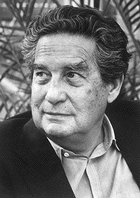 |
Literature | |||
| 1991 |  |
Served on the Cornell faculty as and Bethe Lecturer in Physics 1989–1990 | Physics | ||
| 1991 | Chemistry | ||||
| 1993 | 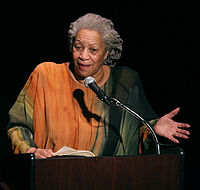 |
A.D. White Professor-at-Large, 1997-2003 |
Literature | "who in novels characterized by visionary force and poetic import, gives life to an essential aspect of American reality" | |
| 1993 |  |
Economics | "for having renewed research in economic history Economic history Economic history is the study of economies or economic phenomena in the past. Analysis in economic history is undertaken using a combination of historical methods, statistical methods and by applying economic theory to historical situations and institutions... by applying economic theory and quantitative methods in order to explain economic and institutional change" |
||
| 1996 | Co-recipient with Douglas D. Osheroff Douglas D. Osheroff Douglas Dean Osheroff is an American physicist known for his work in experimental condensed matter physics, in particular for his co-discovery of superfluidity in Helium-3. For his contributions he shared the 1996 Nobel Prize in Physics along with David Lee and Robert C... and Robert C. Richardson Robert Coleman Richardson Robert Coleman Richardson is an American experimental physicist whose area of research includes sub-millikelvin temperature studies of helium-3... |
Physics | "for their discovery of superfluidity in helium-3" | ||
| 1996 | 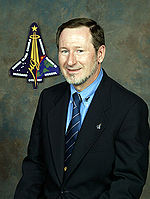 |
Co-recipient with David Morris Lee and Robert Coleman Richardson Robert Coleman Richardson Robert Coleman Richardson is an American experimental physicist whose area of research includes sub-millikelvin temperature studies of helium-3... |
Ph.D. 1973 - Physics |
Physics | "for their discovery of superfluidity in helium-3 Helium-3 Helium-3 is a light, non-radioactive isotope of helium with two protons and one neutron. It is rare on Earth, and is sought for use in nuclear fusion research... " |
| 1996 | Co-recipient with Douglas D. Osheroff Douglas D. Osheroff Douglas Dean Osheroff is an American physicist known for his work in experimental condensed matter physics, in particular for his co-discovery of superfluidity in Helium-3. For his contributions he shared the 1996 Nobel Prize in Physics along with David Lee and Robert C... and David M. Lee |
Professor of Physics, 1968–Present |
Physics | "for their discovery of superfluidity in helium-3" | |
| 1998 |  |
Physiology or Medicine | |||
| 1998 | 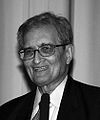 |
Economics | |||
| 2000 |  |
Physiology or Medicine | |||
| 2003 |  |
Ph.D. Ph.D. A Ph.D. is a Doctor of Philosophy, an academic degree.Ph.D. may also refer to:* Ph.D. , a 1980s British group*Piled Higher and Deeper, a web comic strip*PhD: Phantasy Degree, a Korean comic series* PhD Docbook renderer, an XML renderer... , 1969 |
Economics | "for methods of analyzing economic time series Time series In statistics, signal processing, econometrics and mathematical finance, a time series is a sequence of data points, measured typically at successive times spaced at uniform time intervals. Examples of time series are the daily closing value of the Dow Jones index or the annual flow volume of the... with time-varying volatility Volatility (finance) In finance, volatility is a measure for variation of price of a financial instrument over time. Historic volatility is derived from time series of past market prices... (ARCH Autoregressive conditional heteroskedasticity In econometrics, AutoRegressive Conditional Heteroskedasticity models are used to characterize and model observed time series. They are used whenever there is reason to believe that, at any point in a series, the terms will have a characteristic size, or variance... )" |
|
| 2009 | 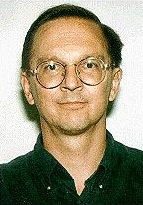 |
Co-recipient with Elizabeth H. Blackburn and Carol W. Greider Carol W. Greider Carolyn Widney "Carol" Greider is an American molecular biologist. She is Daniel Nathans Professor and Director of Molecular Biology and Genetics at Johns Hopkins University. She discovered the enzyme telomerase in 1984, when she was a graduate student of Elizabeth Blackburn at the University of... |
Physiology or Medicine | "for the discovery of how chromosomes are protected by telomeres and the enzyme telomerase" |

